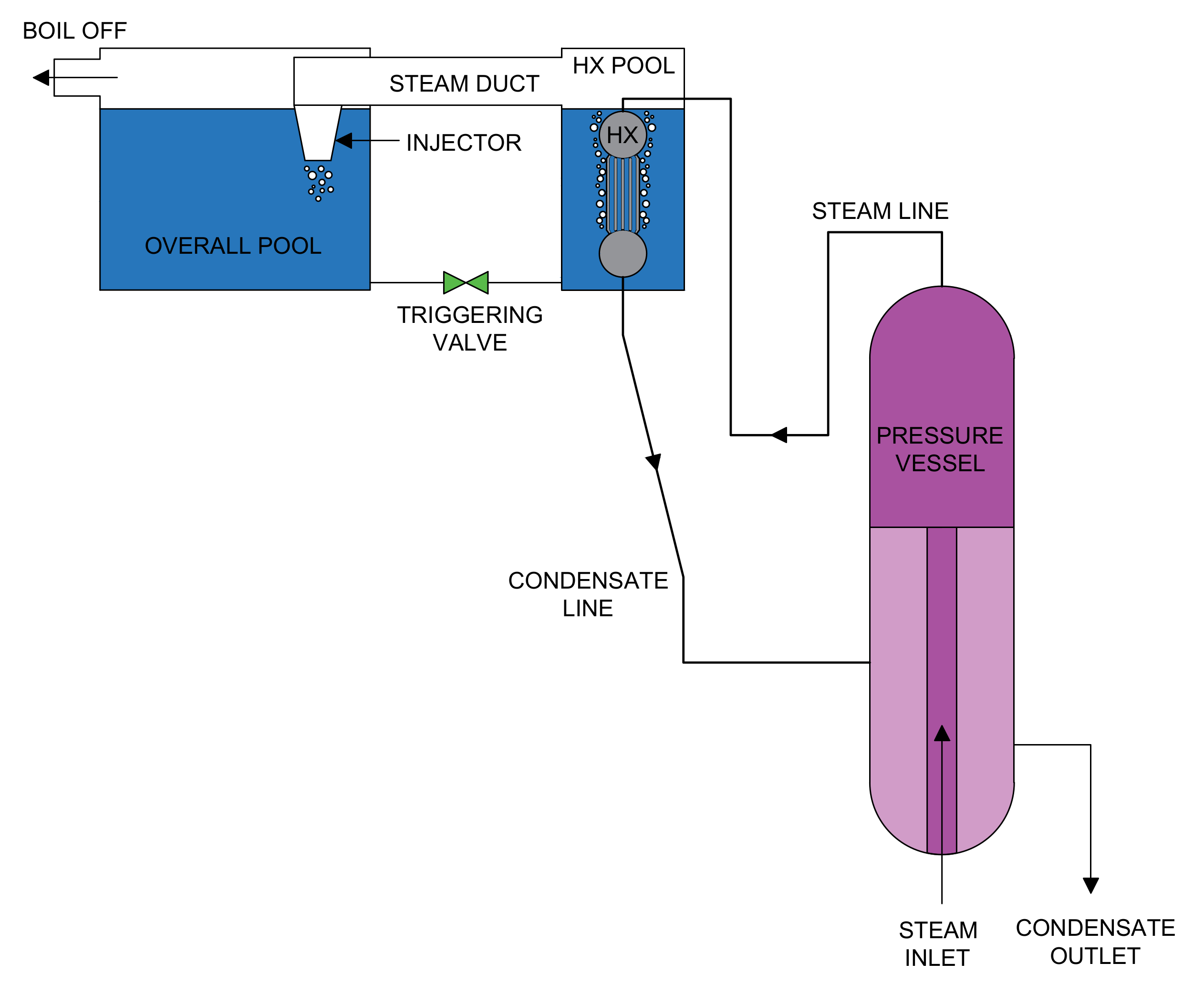PERSEO separate effect test facility to characterize full scale heat transfer in in-pool heat exchanger for decay heat removal

PERSEO is a full scale facility aimed at studying a new passive decay heat removal system operating in natural circulation. It was built at SIET laboratories in Piacenza (Italy) modifying the existing PANTHERS IC-PCC facility. The operating parameters are characteristic of a generic BWR type reactor or the secondary side of a generic PWR type reactor, avoiding valve on the primary circuit. Figure 1 shows the layout of the facility.
PERSEO equipment was not designed to simulate a specific passive system of a particular reactor. Its main purpose is the assessment of the performance and the efficiency of a new in-pool heat exchanger (HX) for decay heat removal, implementing natural circulation. The facility was conceived as an evolution of a previous CEA-ENEA proposal (thermal valve device) which moved the SBWR-IC primary side drain line valve to the low pressure pool side. In this system proposal, it has been changed the modality to start the operation of the system (now the HX pool starts empty) and therefore it has been changed also the dimension of the pool. For this it well represents the physical phenomena in a real time scale. Figure 2 shows a photo of the in-pool HX used in the PERSEO facility.

There is no a direct scaling relation between PERSEO and the PRHR of the AP-600, IC of SBWR or other designs. However, the heat transfer data developed in PERSEO facility could be useful for the generic assessment of system codes for the full-scale heat transfer phenomena in in-pool HX (in-tube side and pool side) of passive systems.
The main innovation in PERSEO facility is the presence of two pools connected by a line with a triggering valve, Figure 1. In this way it is possible to fill the pool where the HX is located only when it is needed for safety reasons, by using the water stored in a second separate pool that could be placed also outside the containment.
PERSEO experimental campaign was carried out at SIET in October and November 2002. Five shake-down tests were performed to characterize the main parameters of the facility and to verify the correct functioning of all the equipment (e.g. water pouring off from the overall pool and the HX pool, structural integrity, pressurization and heat up of the pressure vessel, etc.). After that, four full tests were done in order to characterize the thermal hydraulic behavior and the operation/performance of the proposed design at different conditions, during a generic transient progression, and the related stability.
Currently an open benchmark exercise, hosted by ENEA and with eleven Organizations from different Countries involved, is in progress in framework of the OECD/NEA/CSNI/WGAMA activity on the “Status report on thermal-hydraulic passive systems design and safety assessment”. Among the four actual tests performed, test number 7 has been chosen for the benchmark activity for its completeness. The test is at full pressure (70 bar) and it is aimed both to verify the system stability with different water pool levels and the long term cooling capability of the system.
Fulvio Mascari
ENEA